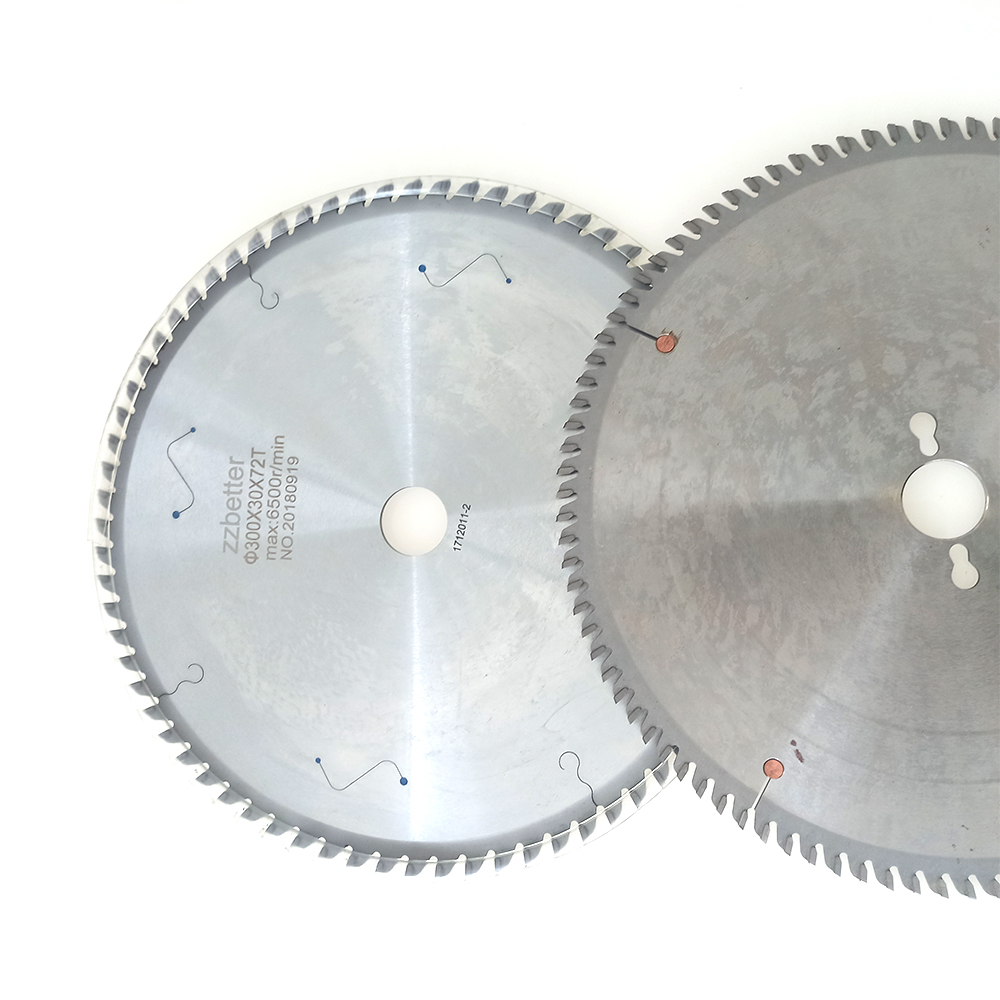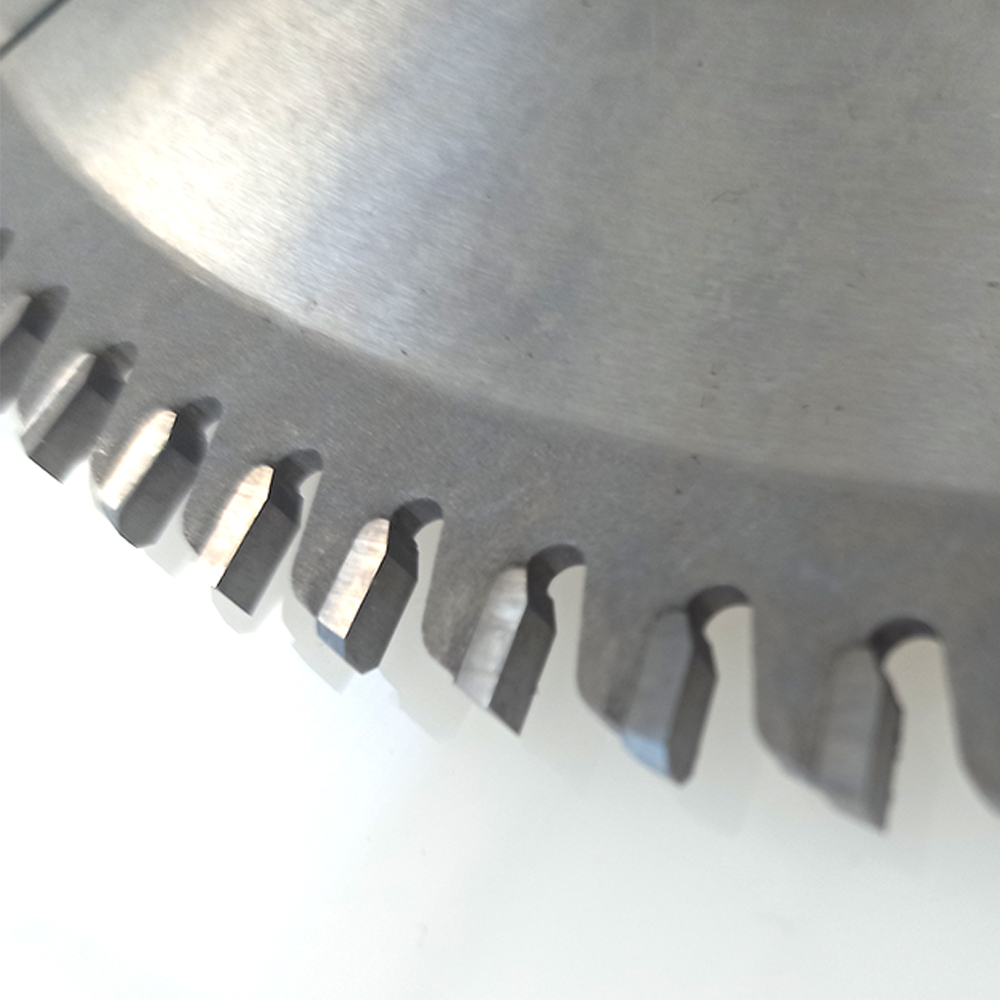How To Choose Carbide Saw Blade?

How to choose carbide saw blade?
The cemented carbide saw blade contains many parameters such as the type of alloy cutter head, the material of the base, the diameter, the number of teeth, the thickness, the tooth shape, the angle, the hole diameter, etc. These parameters determine the processing ability and cutting performance of the saw blade. When choosing a saw blade, it is necessary to correctly select the saw blade according to the type, thickness, sawing speed, sawing direction, feeding speed and sawing width of the sawing material.

(1) Selection of cemented carbide types
The commonly used types of cemented carbide are tungsten-cobalt (code YG) and tungsten-titanium (code YT). Due to the good impact resistance of tungsten and cobalt carbides, they are more widely used in the wood processing industry. The models commonly used in wood processing are YG8-YG15. The number after YG indicates the percentage of cobalt content. With the increase of cobalt content, the impact toughness and flexural strength of the alloy are improved, but the hardness and wear resistance are decreased. Choose according to the actual situation.
(2) The choice of substrate
1.65Mn spring steel has good elasticity and plasticity, economical material, good heat treatment harden-ability, low heating temperature, easy deformation, and can be used for saw blades with low cutting requirements.
2. Carbon tool steel has high carbon content and high thermal conductivity, but its hardness and wear resistance drop sharply at 200 ℃-250 ℃ temperature, the heat treatment deformation is large, the hardenability is poor, and the tempering time is long and easy to crack. Manufacture economical materials for cutting tools such as T8A, T10A, T12A, etc.
3. Compared with carbon tool steel, alloy tool steel has good heat resistance, wear resistance, and good handling performance.
4. High-speed tool steel has good hardenability, strong hardness and rigidity, and less heat-resistant deformation. It is an ultra-high-strength steel, and its thermoplastic stability is suitable for manufacturing high-grade ultra-thin saw blades.
(3) Choice of diameter
The diameter of the saw blade is related to the sawing equipment used and the thickness of the sawing workpiece. The diameter of the saw blade is small, and the cutting speed is relatively low; the larger the diameter of the saw blade, the higher the requirements for the saw blade and the sawing equipment, and the higher the sawing efficiency. The outer diameter of the saw blade is selected according to different circular saw models and the saw blade with the same diameter is used.
The diameters of standard parts are: 110MM (4 inches), 150MM (6 inches), 180MM (7 inches), 200MM (8 inches), 230MM (9 inches), 250MM (10 inches), 300MM (12 inches), 350MM ( 14 inches), 400MM (16 inches), 450MM (18 inches), 500MM (20 inches), etc. The bottom groove saw blades of the precision panel saw are mostly designed to be 120MM.
(4) Selection of the number of teeth
Generally speaking, the more teeth there are, the more cutting edges can be cut in a unit time, and the better the cutting performance is. However, the more the number of cutting teeth, the more cemented carbide is needed, and the price of the saw blade is high, but the teeth are too dense. , the amount of chips between the teeth becomes smaller, which is easy to cause the saw blade to heat up; in addition, there are too many saw teeth, and if the feed amount is not properly matched, the cutting amount of each tooth is very small, which will aggravate the friction between the cutting edge and the workpiece and affect the service life of the cutting edge. . Usually the tooth spacing is 15-25mm, and a reasonable number of teeth should be selected according to the material to be sawed.

(5) Choice of thickness
The thickness of the saw blade In theory, we hope that the thinner the saw blade, the better, the saw seam is actually a kind of consumption. The material of the alloy saw blade base and the manufacturing process of the saw blade determine the thickness of the saw blade. If the thickness is too thin, the saw blade is easy to shake when working, which affects the cutting effect. When choosing the thickness of the saw blade, the stability of the saw blade and the material to be sawed should be considered. The thickness required for some special-purpose materials is also specific, and should be used according to the requirements of the equipment, such as slotting saw blades, scribing saw blades, etc.





















